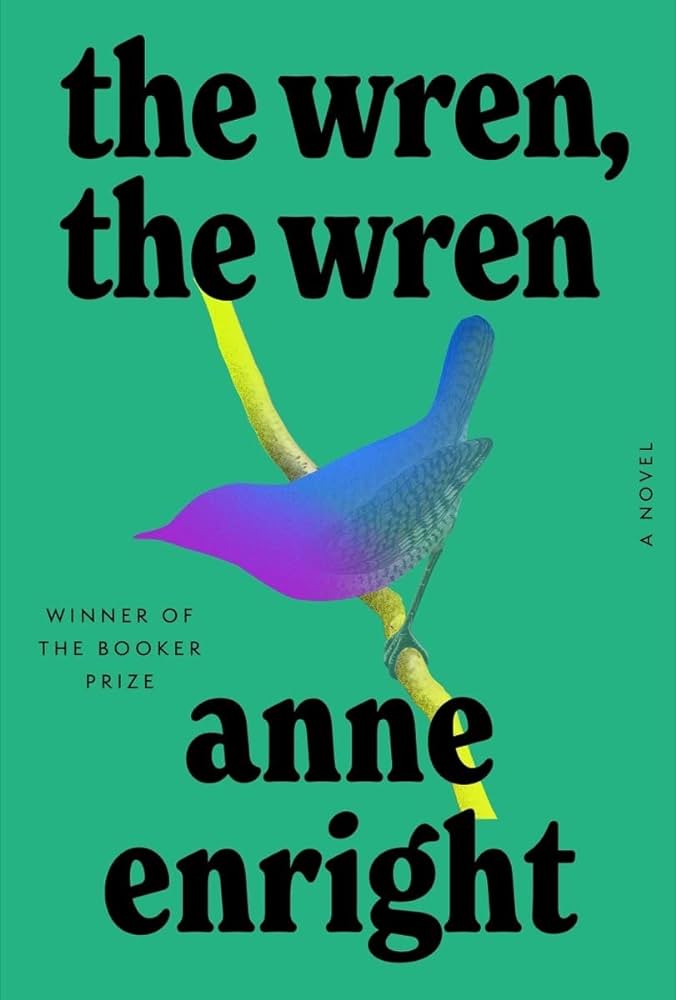The Wren, The Wren is a slender book to cover three generations in Ireland, but that it does. The family we come to know begins with Phil McDaragh, a prize-winning Irish poet who wins fame and celebrity in his lifetime, but who abandons his family when his wife gets breast cancer. Carmel anchors the next generation while her sister labors in nursing and academia. Carmel spends her life alone, mostly by choice, with the exception of her only lasting love, her daughter. Carmel’s daughter Nell, like Phil, makes a career in writing, mostly as an influencer with a good following. All of them struggle with love, rejecting possibility again and again. In a way, it’s a story of one man wreaking damage down through the generations.
But Phil McDaragh offered more than damage. He loved Carmel and wrote to her and creating a poem to honor her. She wavers between love and hate for her father. She certainly cannot trust men so she never gives them a chance to hurt her deeply. Carmel loves her daughter Nell and is happy she needn’t share her with her father, an old lover who likely will never know he fathered Nell. Nell thinks of herself as socially awkward and she goes through a series of unsatisfying men, obsessing for a time about a cruel man. This all seems a repetition of behavior poisoning the generations but can she find a way home to a place she can love happily?

The Wren, The Wren is a beautiful book. Anne Enright writes with language that paint vivid pictures, but she’s not creating some Elysian field or glorious Otherworld. In fact, her writing is very much rooted in this world and its realities. For example, Carmel observes a beautiful zucchini flower, but what truly delights her is the how it looks as though the flower is excreting the zucchini. I love Carmel.
I read this book very slowly. When the story shifted from one character to another, I took a break. There were so many ideas I had to pause, read something else and come back after mulling on her ideas for a while. There was just so much to enjoy, like a rich and decadent chocolate torte. You cannot eat it all at once.
Some of her themes are quite simple, that empathy is how we bridge the spaces between us. Others quite complex, such as the idea that “the pain makes you feel accused of making pain up.” There is also an ongoing contrast between the urban life and the rural life in nature, sometimes only experienced in travel. The potential for rural life to be very brutal, suggested by Carmel’s visit to her lover’s family farm is driven home by the one chapter that focused on Patrick. It was brutal and violent. There is also familial violence between Carmel and her sister, Carmel and her daughter, and Patrick and the women in his life.
Nature is so present in the book, it’s like another character. The idea that all our names for things in nature miss the point, that the creature is itself and doesn’t need our name. Our observation of a bird does not change its birdly essence. Mostly she examined the central dilemmas of being human, love, sex, and family. It could be harrowing, but love endured.
Throughout the book there is poetry which we are to take as Patrick McDaragh’s poetry. They are very much focused on the land, the flowers, the birds, and the animals and, of course, on love. He wrote a poem for the important women in his life, though oddly, not for his American wife. Reading an essay Enright wrote for The Guardian, it seems some of McDaragh’s character was based on the Irish poet Patrick Kavanaugh. Of him and his relationship to women, she concluded their was “a faint creepiness.” Of Patrick McDaragh, there is always a faint creepiness, too.
Another theme running through the book was the sharp contrast between ugliness and beauty. She had no beautiful words for sex or its messy aftermath. It was often painful, disappointing, and demeaning. But the flowers, trees, the water of streams and oceans, and the birds were described with loving awe. The birds, there were always birds, another constant refrain throughout a book named for the wren.
- The Wren, The Wren at W. W. Norton
- Anne Enright at GoodReads (She posts essays and book recommendations.)


Leave a comment